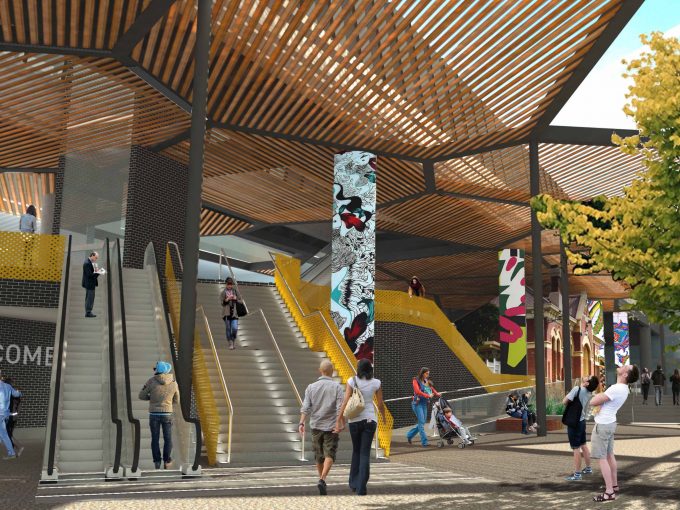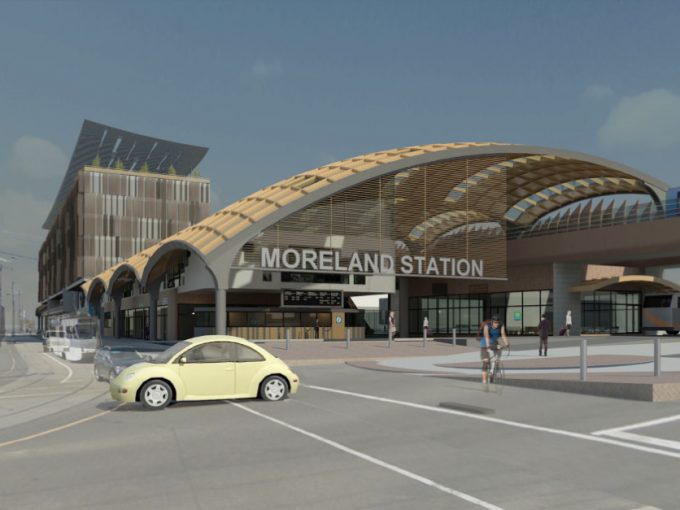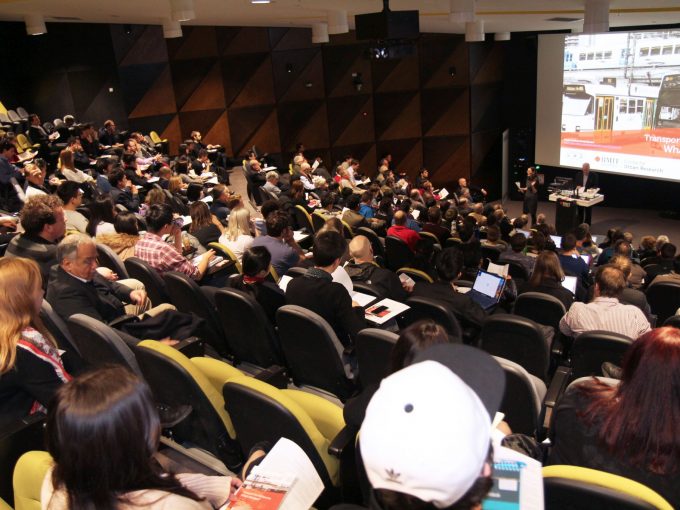Level crossing removals should be part of a total picture for an effective transport system and “skytrains” are the best way to do this, according to RMIT and Melbourne University researchers.
In a recently released report, RMIT urban design lecturer Ian Woodcock and Dr John Stone from the University of Melbourne argue elevated train lines will create a more effective public transport system through better service coordination and more efficient network design.
The report, The Benefits of Level Crossing Removals, is the outcome of years’ of research into better connections between transport, land use planning, urban design and architecture and follows news of plans to introduce sky rails in Melbourne’s south-east.
The State Government recently announced elevated train lines would be introduced along the Dandenong-Cranbourne line to remove longstanding level crossings that stop traffic flow, with some boom gates down for 87 minutes during the two-hour morning peak.
Woodcock, a researcher with the Centre for Urban Research and an associate lecturer in the School of Global, Urban and Social Studies, said in order to capitalise on the substantial investment in the removal of level-crossings, elevating railway lines was a better option.
“If we elevate the railway, we maximise ground level connectivity and open up lots of opportunities to improve active transport options,” he said.
“Access for improved feeder bus services, better bike paths and for pedestrians can all be improved to speed journeys and increase competitiveness of transit trips relative to car-based travel.’’
Woodcock has spent the last decade studying urban planning and design issues related to rail and tram corridors, authoring many peer-reviewed publications and research reports, and giving research seminars to industry, local councils and state government agencies.
A major theme of his work is that much greater attention must be paid to improvements in public transport in order for the benefits of higher densities to be fully realised.
“For far too long the focus of planning policy has been on raising densities without ensuring adequate public transport is available. Melbourne has a lot of catching up to do,” Woodcock said.
The Benefits of Level Crossing Removals: Lessons from Melbourne’s historical experience, examines Melbourne’s rail network, which dates back to the 1850’s and has undergone many upgrades and separations since then.
“Today, Melbourne has more than 170 level crossings, with plans to remove 50 within eight years,’’ Woodcock said.
He said his research had revealed that level crossing removals can be about much more than making roads safer and less congested.
“Some types of level crossing removal have far more benefits than others, in terms of urban renewal opportunities and enhancing local walkability.
“Elevated rail is central to the effective design of Melbourne’s best examples of public transport and land-use integration around stations.
“Elevated stations can become urban hubs, with increased clustering of new development – through structure planning that reinforces the station’s central role in any given neighbourhood.
“A well-designed station integrated with retail outlets and service centres is a great addition to any location or neighbourhood.”
Dr Stone, a senior lecturer in Transport Planning, said: “At present, Victoria has around 170 level crossings and over 100 of them are used by buses.
“To take advantage of the improvements being made, we need to factor in all the connections.
“Stations connect the human flow and movement across the main area when we change from being a passenger, to a pedestrian to a commuter.
“Improving public transport is a high priority for the community but managing road congestion is also important. Stations are key to this and need to be better connected to their communities.”
Elevated stations have long existed in some of the most desirable suburbs of Melbourne such as Glenferrie and Auburn and elevated rail is found around the world, so the engineering aspects are well known.
“As well as minimising disruption and traffic chaos, elevated rail can offer significant added value to our city,” Stone said.
“Better station facilities and convenience retail options will drive a new agenda in urban planning and real estate opportunity.”
Story: Sean O’Malley/Kelly Ryan
Originally published on RMIT News.
Image: Melburnian/CC BY 3.0





